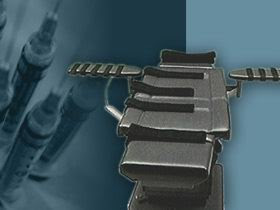
A forthcoming study to be published in the Fordham Urban Law Journal found that almost all states that use a paralyzing drug in the lethal injection of death row inmates forbid the use of this same drug in euthanizing animals.
Ty Alper, the associate director of the Death Penalty Clinic at the University of California-Berkeley School of Law, conducted the research that found that 42 states do not approve neuromuscular blocking agents in the ordinary euthanasia of animals. However, almost 98% of the lethal injections of human beings that have been carried out since 1982 have involved the use of this kind of drug that hides from view severe pain an inmate may be experiencing.
The constitutionality of the lethal injection protocols used in virtually all states with the death penalty is currently being considered by the U.S. Supreme Court in Baze v. Rees that was argued in January. The death row inmates in that case have maintained that the 3-drug method of lethal injection can be extremely painful if the anesthetic used is not administered properly.
However, the paralyzing drug, typically pancuronium bromide, blocks all movement of the inmate and makes it appear that no suffering is occurring. The anesthetic is typically not administered by doctors, but rather by prison personnel.
At the oral argument in Baze, Justice John Paul Stevens remarked in his questioning that states generally use a single-drug protocol in euthanizing animals, thereby avoiding the risk of severe pain: "They use a single drug protocol for animals because it's more humane than the three-drug protocol," said Stevens. In agreeing with Stevens, Alper remarked in an interview, "There's a reason why they don't use it and so there's a reason we should be concerned about executions by lethal injection that do use a neuromuscular blocking agent."
Dr. John Dodam, past president of the American College of Veterinary Anesthesiologists, also expressed concerns about the use of a drug that can mask a patient's condition. "When we euthanize an animal, we're trying to ensure a humane death," Dodam said. "Unconsciousness can be difficult to evaluate in a patient that is paralyzed."
The study is entitled "Anesthetizing the Public Conscience: Lethal Injection and Animal Euthanasia," and it will be published in May.
Source: Death Penalty Information Center










